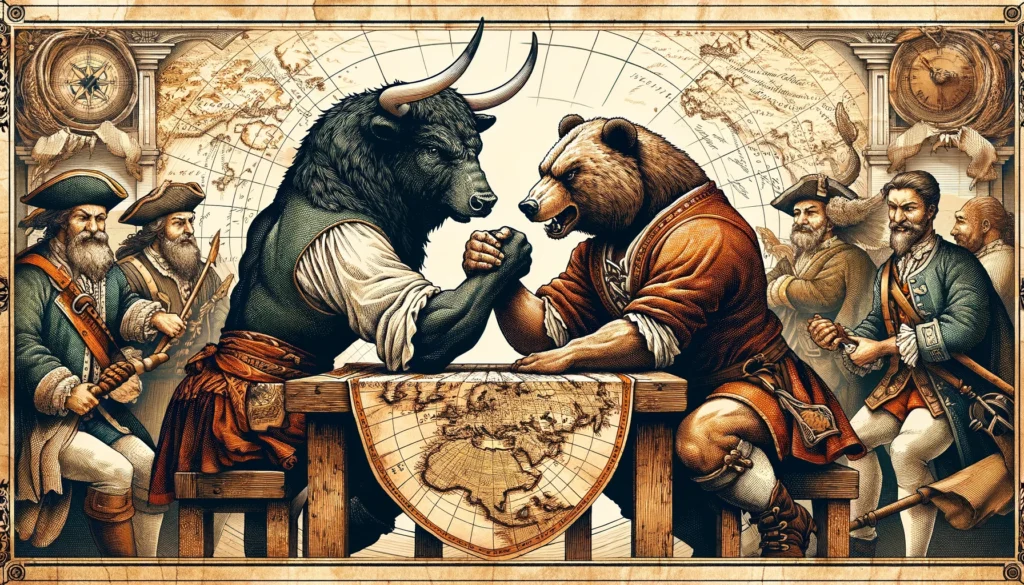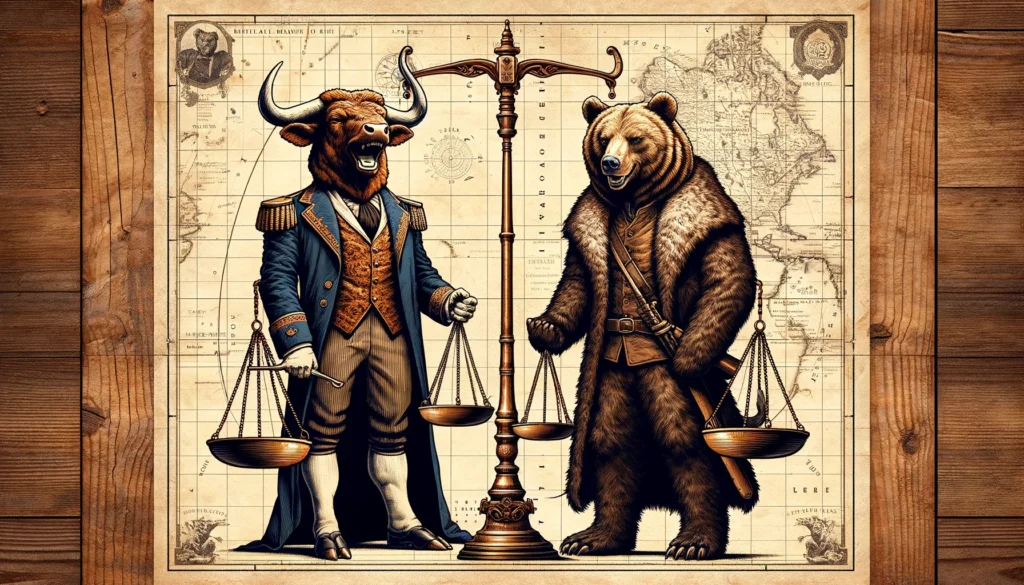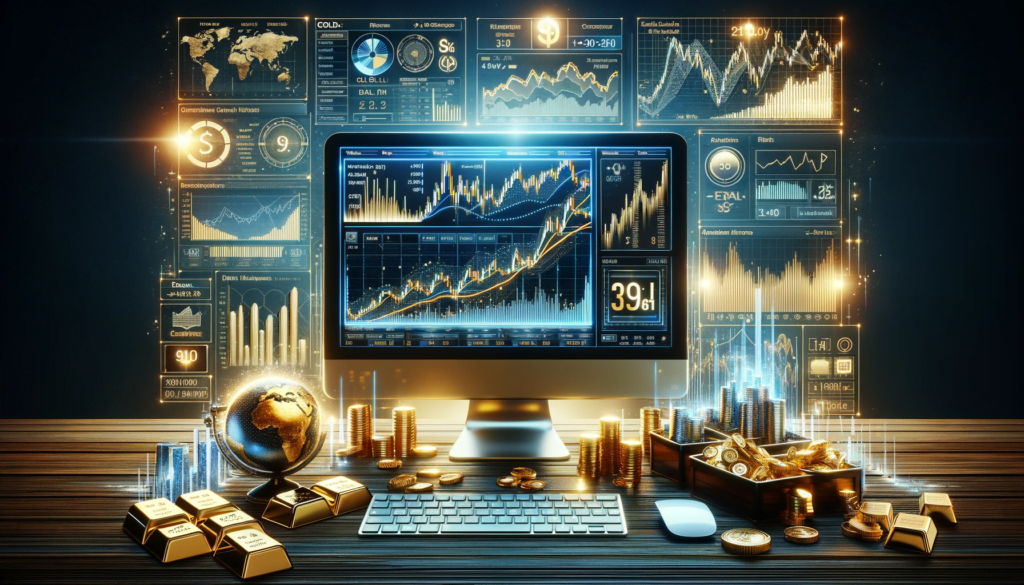In the realm of finance, two ancient creatures symbolize the ever-changing tides of the stock market. These aren’t beasts of burden or predators of the wild, but rather, the mighty Bulls and the cautious Bears of the stock markets. Their origins are steeped in history, and their actions are guided by starkly different sentiments.
The Origins of Bulls and Bears
The story begins on the bustling trading floors of yesteryears. The term “bull” is said to derive from the way these animals attack, thrusting their horns upward into the air, symbolizing the rise of stock prices. Conversely, “bear” relates to the downward swipe of this animal’s paw, indicating a fall in market prices.
The first known use of these terms dates back to the 18th century, linked perhaps to the bear skin trade—traders would sell skins they hadn’t yet acquired, akin to betting on the future fall of prices. This speculative practice laid the groundwork for what we now know as “short selling”.
Going Long vs. Going Short
In the stock market, ‘going long’ means buying stocks in the hope they will gain value. This approach, full of optimism, mirrors the bulls’ outlook. When bulls lead, it shows investors feel good about economic and stock market growth.
Conversely, ‘going short’ means selling stocks you don’t own yet, and planning to buy them back cheaper. This cautious move is typical of bears. They respond to overpriced markets, economic downturns, or the simple truth that what goes up must come down, expecting stock values to drop.
The Sentiment Behind the Movements

Bullish Enthusiasm and the Seeds of Bubbles
Bulls dominating the market means more than just rising stocks; optimism and investment enthusiasm grow, pushing the economy forward. This bullish period thrives on the widespread belief in endless growth. The fear of missing out (FOMO) pulls even cautious investors into action. Yet, hidden beneath this prosperity, economic bubbles start forming!
Market bubbles emerge from the gap between an asset’s price and its real value, driven by speculative trading and irrational enthusiasm. Bullish phases blur the line between optimism and irrationality with their relentless profit chase. This leads to overpriced assets and economic bubbles. While these times promise great fortunes, they also warn of potential danger—the higher the climb, the riskier the fall.
Bearish Realism and the Bursting of Bubbles
When bears take control, they introduce a stark reality check to the market. Bearish sentiment counters bullish enthusiasm, promoting a cautious investment strategy. These periods often see the bursting of bubbles inflated during bullish times.
Suddenly and with devastating impact, economic bubbles burst. Asset prices plummet to their real values, causing significant losses for investors caught off-guard. This shift from bullish to bearish markets highlights economic vulnerabilities, uncovering unsustainable practices. Despite the pain, this correction is necessary, clearing the path for healthier and more sustainable growth ahead.
Evolution Across Markets: From Stocks to All Trading Arenas
The terms “bulls” and “bears” now stretch far beyond the stock market, capturing the essence of trading across all platforms with their timeless dance of optimism and caution. Traders in Forex, commodities, shares, indices, and cryptocurrencies often refer to markets as “bullish” or “bearish”, using these metaphors to convey the underlying sentiments that propel or hinder currencies, goods, and digital assets.
Such linguistic evolution highlights the wide-reaching relevance of these terms, showing that the swings of enthusiasm and correction transcend stock trading to touch every corner of the trading world. From the surging value of Bitcoin in a bullish crypto market to the falling prices of crude oil in a bearish commodity situation, “bulls” and “bears” offer a lens to view and understand the shifting sentiments that shape economic landscapes globally.




I am really impressed together with your writing skills as neatly as with the layout to your blog.
Is that this a paid theme or did you modify it yourself?
Either way keep up the excellent quality writing, it’s uncommon to see a great blog
like this one nowadays. Instagram Auto follow!